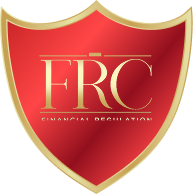In recent years, virtual assets have become an increasingly important component of the financial landscape. The rise of cryptocurrencies, non-fungible tokens (NFTs), and digital real estate is reshaping the investment world, creating new opportunities and challenges for wealth managers. These virtual assets offer high potential returns, but they also come with unique risks and complexities that require careful consideration.
Virtual asset management (VAM) is a field that integrates traditional wealth management strategies with emerging digital assets. For wealth managers in the UK, understanding how to navigate this rapidly evolving sector is critical to staying ahead of client demands and market trends. In this article, we will explore the concept of virtual asset management, its key components, and the strategies wealth managers can adopt to incorporate virtual assets into their clients' portfolios. We will also address the regulatory landscape, risks, and the future of virtual asset management.
Virtual assets refer to any digital asset that exists in an online environment, and which can be owned, bought, sold, or traded. They span a wide range of categories, including cryptocurrencies, NFTs, digital art, virtual real estate, and even virtual goods used in gaming or online platforms.
The most widely known form of virtual assets are cryptocurrencies like Bitcoin, Ethereum, and Solana. These decentralised digital currencies are based on blockchain technology, allowing for peer-to-peer transactions without the need for centralised institutions like banks.
Non-fungible tokens (NFTs) are another type of virtual asset that has garnered significant attention in recent years. NFTs are unique digital tokens that represent ownership or proof of authenticity of digital assets such as art, music, videos, and even virtual real estate. Unlike cryptocurrencies, NFTs are not interchangeable as each token holds its own unique value.
Digital real estate is a growing market in which virtual spaces in digital worlds like Decentraland or The Sandbox are bought, sold, and developed. These virtual properties, which are often used in gaming and metaverse platforms, offer new opportunities for investors to diversify their portfolios.
Beyond these, there are also virtual goods such as in-game items, digital collectibles, and virtual currencies that form part of the broader virtual asset ecosystem. These assets have become an integral part of online economies and are increasingly seen as valuable investments.
Wealth management, traditionally associated with managing financial assets such as stocks, bonds, and real estate, is now expanding to include virtual assets. This shift is driven by increased client interest in virtual assets, particularly as they become more mainstream in both retail and institutional investment circles.
For wealth managers, integrating virtual assets into their offerings involves more than simply adding new types of assets to portfolios. It requires a deep understanding of the nature of these assets, the risks involved, and how they interact with traditional financial markets. Wealth managers need to help clients balance the volatility and speculative nature of virtual assets with their long-term financial goals, all while staying ahead of regulatory changes and technological developments.
Here are some ways wealth managers can navigate the virtual asset landscape:
Before advising clients on virtual assets, wealth managers need to gain a comprehensive understanding of the various types of digital assets available. This involves understanding their unique characteristics, potential returns, risks, and the markets they operate in.
Cryptocurrencies: Cryptocurrencies like Bitcoin and Ethereum have become the most popular form of virtual asset. They are considered to be high-risk, high-reward assets due to their price volatility. Wealth managers must understand how to assess their value, the factors influencing their price movements, and the security measures required for storing and trading these assets.
NFTs: NFTs represent ownership of unique digital items, and their value is often subjective, driven by rarity, demand, and the reputation of the creator. Wealth managers need to be aware of the specific dynamics of the NFT market, including market trends, the technology behind NFTs, and how to assess the long-term value of digital assets that are often driven by speculative interest.
Digital Real Estate: Digital real estate is gaining traction in virtual worlds, with investors purchasing land or properties in platforms like Decentraland and The Sandbox. Wealth managers need to assess the value of these virtual properties, understand how digital economies within these platforms operate, and weigh the risks involved in investing in digital real estate.
Virtual Goods: The market for virtual goods in video games and online platforms is rapidly expanding. Wealth managers need to understand how these assets are traded, their value proposition, and the potential for growth in this market. Understanding platforms like Roblox, Fortnite, and other digital spaces will be essential.
One of the primary concerns with virtual assets is their high degree of risk and volatility. Cryptocurrencies, for example, can experience extreme price swings within short time frames, and NFTs may be subject to speculative bubbles. In the case of digital real estate, valuations are often speculative and can be affected by the growth or stagnation of virtual worlds.
Wealth managers must assess the risk tolerance of their clients and build strategies that mitigate risk while taking advantage of the growth potential of virtual assets. This includes developing diversified portfolios that blend traditional assets like stocks and bonds with digital assets to balance the inherent volatility.
There are several tools wealth managers can use to help mitigate risk, such as:
Hedging strategies: Using derivatives or other financial instruments to protect against price fluctuations in virtual assets.
Risk-adjusted return analysis: Assessing virtual assets in terms of their potential return against the risk involved, and integrating this into portfolio diversification.
Diversification: Allocating assets across various types of virtual assets to reduce the risk associated with investing in a single category (e.g., combining cryptocurrencies with NFTs and virtual real estate).
While virtual assets are increasingly part of the investment landscape, they are still relatively new compared to traditional asset classes. Wealth managers must develop strategies for integrating virtual assets into their clients’ broader investment portfolios. This requires understanding the correlation between virtual assets and traditional assets such as equities, bonds, and commodities.
Some wealth managers may also need to rethink asset allocation models, especially if virtual assets continue to outperform traditional assets. For example, how much of a portfolio should be allocated to high-risk assets like Bitcoin or NFTs? How can digital real estate be leveraged alongside real-world property investments?
Wealth managers should focus on how virtual assets fit into the client’s long-term goals, whether that means using them as a hedge against inflation, a growth opportunity, or a diversification strategy.
The regulatory environment surrounding virtual assets is constantly evolving, and wealth managers need to stay up to date with the legal framework in the UK and globally. Virtual assets are still considered somewhat of a grey area by many regulators, although the UK government and financial authorities are gradually developing clearer guidelines for the industry.
Taxation: Virtual assets may be subject to taxation, and wealth managers need to understand how capital gains tax, income tax, and other tax obligations apply to virtual assets. Cryptocurrencies and NFTs, for example, are typically taxed when they are sold or exchanged, and wealth managers need to help clients navigate the complexities of tax compliance.
Regulation of cryptocurrencies and NFTs: The Financial Conduct Authority (FCA) and other regulatory bodies in the UK are working on establishing clearer rules around cryptocurrency and NFT transactions. Wealth managers must stay informed about changes in the regulatory landscape to ensure that they are advising clients in compliance with the law.
Consumer protection: As virtual assets are prone to fraud, cyber attacks, and scams, wealth managers need to ensure that their clients are following best practices for securing their digital assets. This includes recommending reputable platforms for buying, storing, and selling virtual assets and understanding the risks of unregulated exchanges.
One of the key roles of a wealth manager is to educate clients on the complexities and risks of virtual asset investments. Many clients may be unfamiliar with the concepts of blockchain technology, cryptocurrency markets, or NFTs, and wealth managers must ensure that clients are making informed decisions.
This education process involves explaining the fundamental technology behind virtual assets, the potential risks and rewards, and how these assets fit into a well-balanced investment strategy. Wealth managers can use seminars, webinars, or personalised consultations to help clients understand the digital asset landscape and its potential role in their portfolio.
As virtual assets continue to evolve and gain mainstream acceptance, the role of wealth managers in this space will only increase. The future of virtual asset management will likely see greater institutional involvement, more regulated markets, and the integration of artificial intelligence and blockchain technology to improve portfolio management and risk assessment.
Wealth managers will need to stay ahead of the curve by understanding new virtual asset classes, tools, and regulatory changes. As digital economies and virtual worlds continue to grow, there will be more opportunities to invest in innovative assets that could redefine the investment landscape.
Wealth management for virtual asset management is a complex but rewarding area that offers significant potential for growth and diversification. With the increasing importance of virtual assets in global markets, wealth managers need to adapt their strategies to accommodate this new asset class. By understanding the nature of virtual assets, assessing risk, integrating them into traditional portfolios, staying informed on regulatory changes, and educating clients, wealth managers can successfully navigate the world of virtual asset management.
As the sector evolves, staying up to date with technological developments, regulatory changes, and market trends will be crucial for wealth managers looking to provide cutting-edge advice to clients. Whether it's helping clients gain exposure to cryptocurrencies, advising on NFT investments, or exploring the opportunities in digital real estate, wealth managers will play an essential role in the future of virtual asset management. By embracing the digital revolution in wealth management, they can offer innovative solutions that meet the needs of modern investors in a rapidly changing financial world.
Be the first to know about new class launches and announcements.


Financial writer and analyst Ron Finely shows you how to navigate financial markets, manage investments, and build wealth through strategic decision-making.
